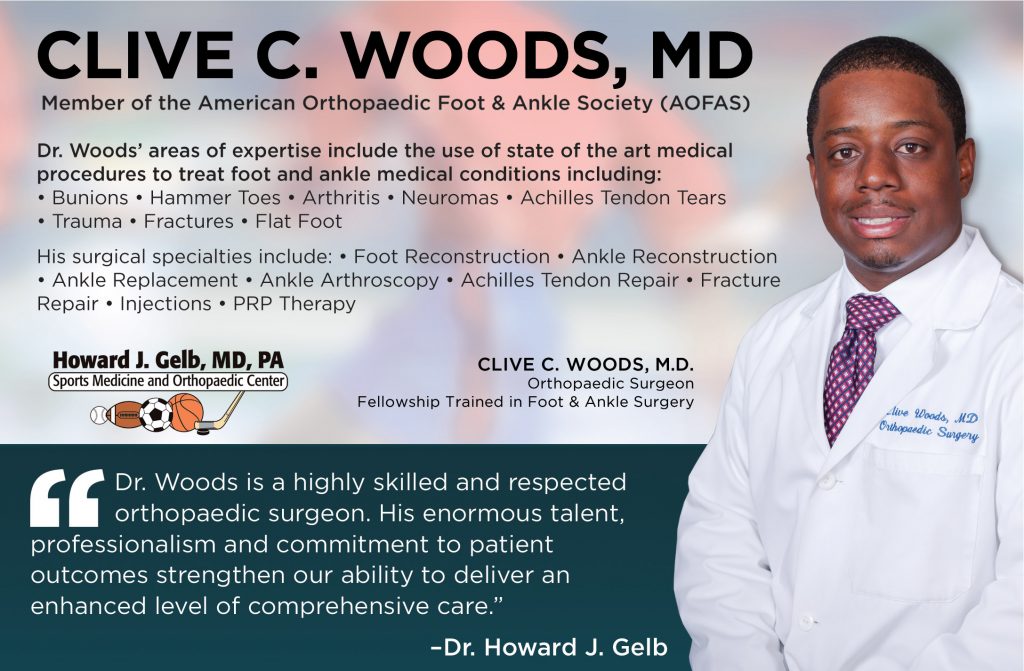By Dr. Clive C. Woods
A bunion is a deformity in which the great toe gradually points toward the second toe. In addition, the joint at the base of the toe gradually moves away from the second toe. The medical term for this deformity is called Hallux Valgus. It is believed to occur due to wearing shoes with a tight toe box. It is commonly seen in women due to their tendency to wear tight shoes. Bunions can also be familial, or due to problems such as arthritis and various neurogenic conditions. Bunions often cause pain and swelling around the joint at the base of the big toe, mainly due to the increase in width of the foot.
The overlying skin can become red, warm, and thickened. In addition, the deformity can push the second toe up causing a hammertoe. Relieving a bunion doesn’t necessarily mean purchasing ugly or out of fashion shoes. It is a good idea to shop for shoes late in the day, when your feet are the largest from swelling. The shoe should have a half-inch between your longest toe and the front of the shoe. It should also be wide enough to wiggle your toes. I would also recommend the heel height to be low with your heel firmly against the back of the shoe. Other treatment such as bunion pads, which are available at most drugstores, and ice massage, can ease your pain. To help relieve a painful bunion, a plastic bag of ice should be applied to the area for 5 minutes. You may repeat this 2 to 3 times per day.
When these treatments have failed, Bunionectomy Surgery may be indicated. An x-ray of the foot is taken before surgery in order to evaluate the severity of the deformity, and whether there is existing arthritis in the joint. During standard bunion (hallux valgus) correction, the prominent bone is shaved away. The metatarsal bone is cut and re-positioned with screws, a plate, or a combination of the two. A soft tissue release is performed on the contracted joint capsule and adductor tendon between the first and second toe. T
he final portion of the procedure entails tightening the capsule over the shaved bunion to help move the great toe away from the second. After this procedure the patient is placed in a bunion wrap and a small boot. The first 4 to 6 weeks you are allowed to bear weight on your heel. X-rays are obtained in the office to view the healing of the repositioning of the great toe. The treatment for an arthritic joint differs from a joint without degenerative changes. Depending on the severity of the arthritic bunion, the treatment may require a fusion of the joint.
Dr. Woods completed his foot & ankle fellowship at the esteemed Florida Orthopaedic Institute in Tampa Bay, FL and received his medical degree from Meharry Medical College in Nashville, TN where he was a member of Alpha Omega Alpha Medical Honor Society.
Sports Medicine & Orthopaedic Center • (561) 558-8898


